Introduction
Unveiling the Mystery of Golf Apparel Flexibility
In the world of golf, where precision and fluidity of movement are of utmost importance, the design of golf apparel takes on a significance that extends far beyond mere aesthetics. The question “Why is flexibility for movement crucial in golf apparel design?” is not just a matter of comfort; it's a fundamental aspect that can significantly impact a player's performance on the green. Whether you're a golf apparel startup looking to make a mark in the industry, an individual seeking the perfect custom golf polo shirt, a procurement manager sourcing high-quality golf wear for your company, or a fashion buyer scouting for the next big trend in golf fashion, understanding the importance of flexibility in golf apparel is essential.

Golf is a sport that demands a unique combination of strength, balance, and grace. Every swing, from the gentle putt to the powerful drive, requires a full range of motion. This is where flexible golf apparel comes into play. It acts as a silent partner, enabling players to move freely without the restriction of stiff or ill- itting clothing. For instance, during a backswing, a golfer needs to rotate their torso and extend their arms fully. If the shirt or jacket they're wearing is too tight or lacks flexibility, it can impede this movement, leading to a less-than-optimal swing and potentially affecting the accuracy and distance of the shot.
Moreover, the importance of flexibility in golf apparel is not limited to performance on the course. In today's market, consumers, especially those in the golfing community, are becoming increasingly conscious of the quality and functionality of their clothing. They seek golf wear that not only performs well but also aligns with their personal style and values. This has led to a rise in demand for innovative golf fashion, modern golf wear, and unique ladies' golf apparel, all of which prioritize flexibility as a key feature. Additionally, with the growing emphasis on sustainability, eco-friendly golf apparel made from premium, sustainable materials is also gaining popularity among environmentally conscious brands and consumers alike.
The Swing: A Complex Movement
The Mechanics of a Golf Swing
A golf swing is a symphony of coordinated movements that requires the harmonious interaction of multiple body parts. It begins with the setup, where the golfer positions their body, feet, and hands in a way that provides a stable foundation for the swing. From there, the backswing commences, which involves a significant amount of body rotation. The golfer's hips and shoulders turn in unison, with the hips leading the rotation. As the backswing progresses, the arms extend and the wrists cock, storing potential energy. This movement is similar to a coiled spring, ready to release its energy upon the downswing.
The downswing is where the stored energy is unleashed. The hips rotate rapidly in the opposite direction, followed by the shoulders. The arms and hands then accelerate the club towards the ball, with the wrists uncocking at the moment of impact. This rapid sequence of movements generates the necessary speed and power to propel the ball towards the target. Finally, the follow-through occurs, where the body continues its natural motion after the ball has been struck. The golfer's weight transfers from the back foot to the front foot, and the arms and club complete their arc, ending in a balanced finish.
Throughout this entire process, the body is constantly in motion, with each part relying on the others to execute the swing effectively. The legs provide stability and power, the torso rotates to generate torque, and the arms and hands control the club. For example, during the backswing, the golfer may rotate their torso up to 90 degrees or more, depending on their swing style. The arms may extend fully, and the wrists may cock to an angle of around 90 degrees as well. These movements require a high degree of flexibility from the clothing to ensure that they can be performed without restriction.

How Restrictive Clothing Hinders Performance
When a golfer wears clothing that is too tight or lacks flexibility, it can have a significant impact on their swing and overall performance. For instance, imagine a golfer wearing a shirt that is too small around the chest and shoulders. As they begin their backswing, the shirt may constrict their movement, making it difficult for them to rotate their torso fully. This restricted rotation can lead to a shorter backswing, which in turn reduces the amount of potential energy stored for the downswing.
Similarly, tight pants or shorts can limit the movement of the legs. During the swing, the legs need to move freely to provide stability and power. If the pants are too tight around the thighs or hips, the golfer may not be able to shift their weight properly or rotate their hips with the necessary speed. This can result in a loss of balance and power, leading to a weaker shot.
In addition to restricting movement, non-flexible clothing can also affect the golfer's rhythm and timing. A smooth, flowing swing is essential for consistent performance in golf. However, if the clothing is constantly tugging or pulling on the body, it can disrupt the golfer's concentration and rhythm. This can cause them to mistime their swing, resulting in a poor-quality shot. For example, a golfer may be in the middle of their downswing when they feel a tightness in their shirt or pants. This unexpected sensation can throw off their timing, causing them to hit the ball off-center or with less power than intended.
The Science Behind Flexible Fabrics
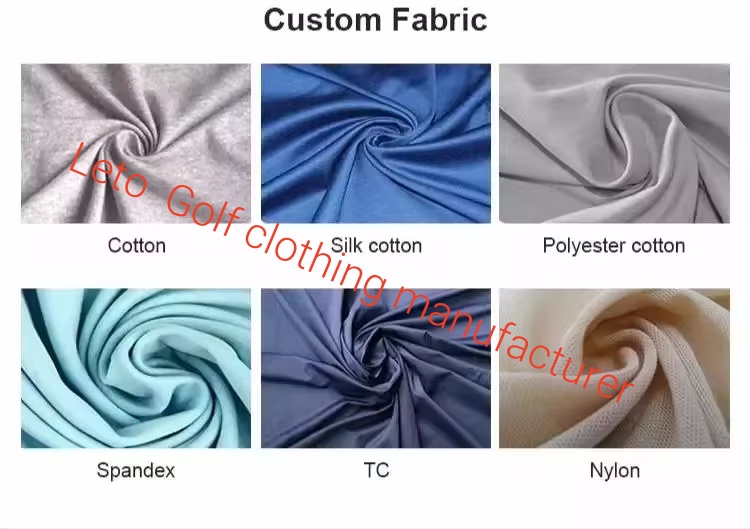
Types of Flexible Fabrics Used in Golf Apparel
When it comes to golf apparel, several types of flexible fabrics have become the go-to choices for manufacturers. One of the most common is the spandex blend. Spandex, also known as elastane in some regions, is a synthetic fiber renowned for its exceptional elasticity. It can stretch up to 5-8 times its original length and then return to its original shape without losing its elasticity. This makes it an ideal addition to fabrics like cotton or polyester. For example, a cotton-spandex blend combines the breathability and softness of cotton with the stretchability of spandex. This blend is often used in golf shirts, providing golfers with a comfortable and flexible garment that can move with their bodies during the swing.
Another popular fabric is elastic nylon. Nylon is a strong and durable synthetic fiber, and when it is engineered to be elastic, it offers a unique set of benefits. Elastic nylon is resistant to abrasion, making it suitable for golf pants and shorts that may come into contact with golf clubs or the rough terrain of the course. Its elasticity allows for a full range of motion, whether a golfer is bending down to mark their ball or taking a powerful swing. Additionally, nylon has moisture-wicking properties, which can help keep the golfer dry by pulling sweat away from the body.
Some high-end golf apparel may also incorporate lycra, which is a brand of spandex. Lycra is known for its superior stretch and recovery properties. It can maintain its shape even after repeated stretching, making it a long-lasting option for golfers who want their clothing to perform well over time. This fabric is often used in form-fitting golf wear, such as compression shirts or leggings, which provide both support and flexibility.
The Role of Fabric Technology in Enhancing Flexibility
Advancements in fabric technology have played a crucial role in enhancing the flexibility of golf apparel. One such technology is the use of special knitting and weaving techniques. For instance, flat-knit technology is often used to create seamless garments. In a flat-knit construction, the fabric is knitted in a way that eliminates the need for seams in certain areas. This not only improves the flexibility of the garment but also reduces chafing, as there are no rough seams rubbing against the skin. Seamless golf shirts made with this technology can stretch and move with the golfer's body, providing a more comfortable and unrestricted experience on the course.
Another aspect of fabric technology is the use of smart materials. Some fabrics are now engineered with shape - memory polymers. These polymers can “remember” their original shape and return to it even after being stretched or deformed. In golf apparel, this means that the fabric can adapt to the golfer's movements during the swing and then quickly revert to its original form, ensuring a consistent fit throughout the game. For example, a golf jacket made with shape - memory fabric can expand when the golfer raises their arms during the backswing and then contract back to its normal size once the swing is complete.
Moreover, the development of micro-fiber technology has also contributed to the flexibility of golf fabrics. Micro-fibers are extremely fine fibers that are often used to create lightweight and highly flexible materials. These fibers can be woven or knitted in a way that allows for greater stretch and breathability. Micro-fiber golf gloves, for example, are not only flexible enough to provide a natural feel when gripping the club but also breathable, reducing sweat buildup and improving grip. These technological advancements not only enhance the flexibility of golf apparel but also improve its durability and overall performance, making them a win - win for both golfers and manufacturers.
Design Features that Promote Flexibility
Seam Placement and Construction
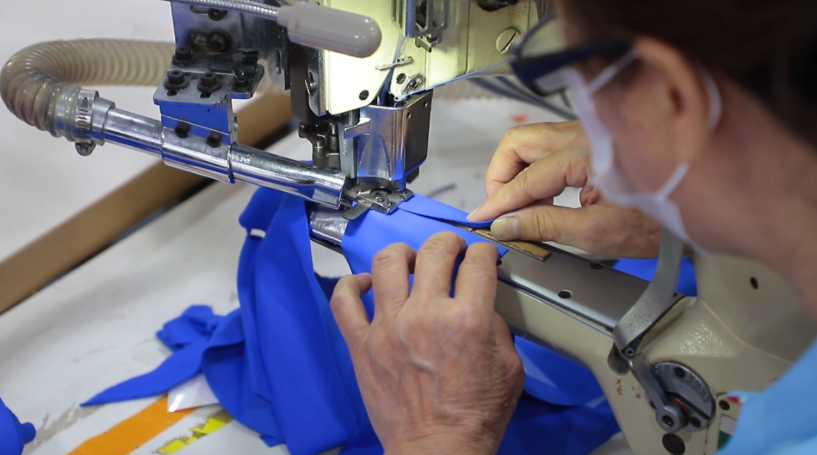
The placement and construction of seams in golf apparel play a pivotal role in ensuring flexibility. In traditional clothing, seams are often a source of discomfort and restricted movement. However, in well - designed golf apparel, manufacturers pay close attention to where these seams are placed. For example, seams that run across the shoulders or chest in a non-ergonomic way can create pressure points when a golfer moves. In golf shirts, instead of having a seam that goes straight across the back between the shoulders, many modern designs use a raglan sleeve construction. This design features seams that run diagonally from the collar to the underarm, allowing for a greater range of motion in the shoulders. This is because the diagonal seam follows the natural movement of the shoulder joint, rather than cutting across it.
In terms of construction methods, flat-lock seams are a popular choice in golf apparel. Flat-lock seams are created by stitching two pieces of fabric together in a way that the seam lies flat against the body. This not only reduces chafing but also allows the fabric to move more freely. For instance, in golf shorts, flat-lock seams along the inner thighs prevent irritation during the repeated leg movements of a golf swing. Another innovative seam construction is the use of ultrasonic welding in some high-end golf gear. Ultrasonic welding creates a seamless bond between fabrics, eliminating the need for traditional stitching. This results in a garment that is not only extremely flexible but also more aerodynamic, which can be an added advantage for golfers looking for every possible edge in their performance.
Stretch Zones and Panels

To further enhance flexibility, many golf apparel manufacturers incorporate stretch zones or panels in key areas of the garment. These are areas where the fabric is designed to stretch more easily to accommodate the body's movements. One of the most common areas for stretch zones is the underarm. During a golf swing, the arms move in a wide arc, and the underarm area experiences a significant amount of stretching. By using a more elastic fabric in this area, such as a spandex - rich material, golfers can move their arms freely without feeling restricted. This can improve the fluidity of their swing and reduce the risk of muscle strain.
Knees and elbows are also important areas for stretch panels. In golf pants, stretch panels at the knees allow golfers to bend and squat comfortably, whether they are picking up their ball or taking a stance. Similarly, in golf jackets or long - sleeve shirts, stretch panels at the elbows enable unrestricted movement of the arms. These panels can be made from a variety of materials, including mesh - like fabrics that are not only stretchy but also breathable. For example, some golfers may prefer to wear a lightweight golf jacket with stretch panels at the elbows and underarms. These panels not only provide flexibility but also help to regulate body temperature by allowing air to circulate more freely. Additionally, the use of stretch zones and panels can also enhance the overall fit of the garment. They can conform to the body's natural curves, providing a more comfortable and flattering look while still allowing for the necessary freedom of movement on the golf course.
Comfort and Performance: The Dual Benefits
Comfort During the Game
Flexible golf apparel is a game-changer when it comes to comfort on the golf course. When a golfer's clothing can move with their body, it significantly reduces friction. For example, imagine a golfer wearing a traditional, non-flexible cotton shirt. As they make repeated swings throughout a long 18-hole round, the fabric may rub against their skin, especially in areas like the underarms or the sides of the torso. This constant friction can lead to irritation, redness, and even chafing, which can be not only uncomfortable but also distracting.
In contrast, a golf shirt made from a flexible fabric blend, such as a cotton-spandex mix, glides smoothly over the skin as the golfer moves. The stretchy nature of the fabric allows it to adapt to the body's movements without pulling or tugging. This means that golfers can focus on their game rather than being bothered by discomfort from their clothing. Additionally, flexible clothing also reduces the feeling of being restricted. Golfers can bend, stretch, and rotate their bodies freely, as if they were wearing nothing constricting at all. This sense of freedom allows them to relax and enjoy the game, even during long hours on the course.

Impact on Performance
The impact of flexibility on a golfer's performance cannot be overstated. A flexible garment enables a full range of motion, which is essential for generating maximum power in a golf swing. When a golfer can rotate their torso fully during the backswing and downswing, they can transfer more energy from their body to the club. This results in a more powerful shot, with the ball traveling greater distances.
For instance, a study conducted among amateur golfers found that those who wore flexible golf apparel were able to increase their average driving distance by up to 10 yards compared to when they wore non - flexible clothing. This increase in distance can be a significant advantage, especially on longer holes. Moreover, flexibility also improves the accuracy of a golfer's shots. With unrestricted movement, golfers can maintain a more consistent swing plane and tempo. They can better control the clubface at the moment of impact, leading to more accurate shots. This is crucial for hitting the fairway off the tee or making precise approach shots to the green.
In addition to power and accuracy, flexibility also contributes to the stability of a golfer's swing. A stable swing is one that is balanced and consistent. Flexible clothing allows golfers to maintain their balance throughout the swing, as they can move their legs, hips, and torso in a coordinated manner. This reduces the risk of making erratic or unbalanced swings, which can lead to poor - quality shots. Overall, the flexibility of golf apparel is directly linked to a golfer's performance on the course, making it a crucial factor in the design of high - quality golf wear.
Leto Golf Manufacturing: Your Custom Solution
Our Comprehensive Customization Services
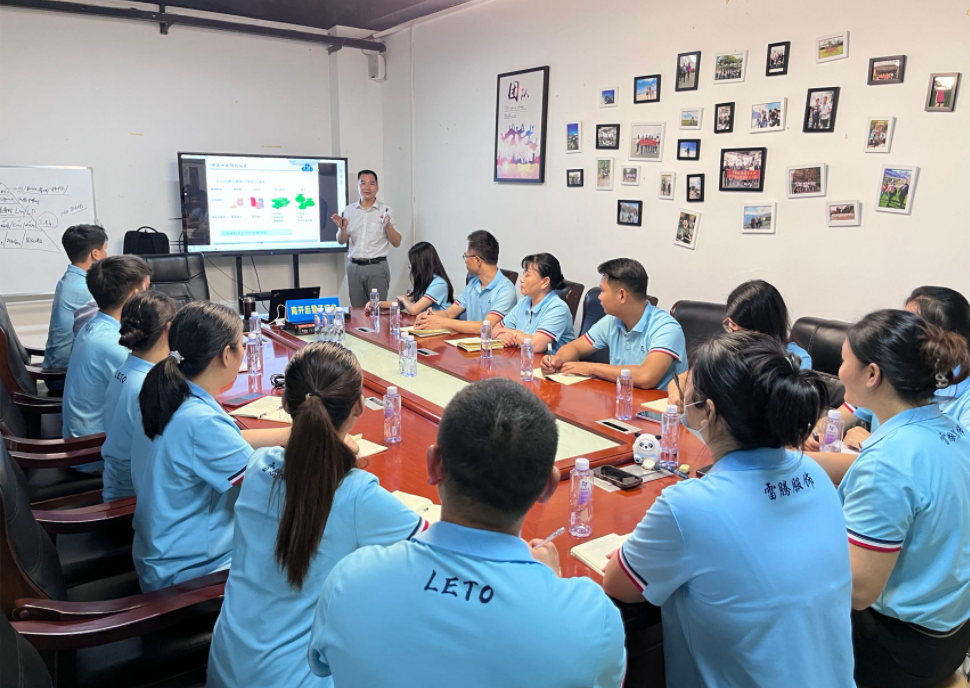
At Leto Golf Manufacturing, we pride ourselves on offering a wide range of customization services tailored to meet the unique needs of our clients. For those looking for custom golf polo shirts, we have a no -minimum-order policy. This means that whether you're a golf apparel startup with a small initial order or an individual wanting a personalized piece for your own use, you can take advantage of our high- quality customization services without having to worry about large quantity requirements.
Our personalized design services are second - to - none. We work closely with you to understand your vision, whether it's a unique color scheme, a specific pattern, or a particular style of collar or sleeve. Our team of experienced designers will bring your ideas to life, ensuring that your golf apparel stands out on the course. Additionally, we specialize in custom logo services. Whether you want to embroider your company logo, a personal monogram, or a unique brand symbol onto your golf shirts, jackets, or hats, we use the latest embroidery and printing techniques to create a high-quality, durable finish.
Meeting Diverse Needs, from Startups to Established Brands

We understand that the needs of our clients can vary greatly. For golf apparel startups, we offer a supportive and collaborative environment. We know that entering the market can be challenging, and we're here to help you every step of the way. Our team can provide valuable insights into the latest trends in golf fashion, materials, and design, helping you create a unique product line that will attract customers. We also offer flexible production schedules and cost-effective solutions, allowing startups to manage their budgets effectively while still achieving high - quality results.
For individuals, our focus is on providing a personalized and seamless experience. Whether you're a passionate golfer looking for a custom-made outfit for your weekend rounds or a collector of unique golf apparel, we ensure that your order is handled with the utmost care. We offer a wide range of fabric options, from premium natural fibers to high-tech synthetic blends, so you can choose the material that best suits your comfort and performance needs.
Procurement managers and fashion buyers also benefit from our services. We can handle large-scale orders with ease, ensuring that you receive consistent quality across all items. Our efficient manufacturing processes mean that we can meet tight deadlines, even for high-volume orders. And with our extensive customization options, you can source unique and stylish golf apparel that will appeal to your customers, whether you're supplying a golf club, a sports retailer, or a corporate client.
Quality, Efficiency, and Service Excellence
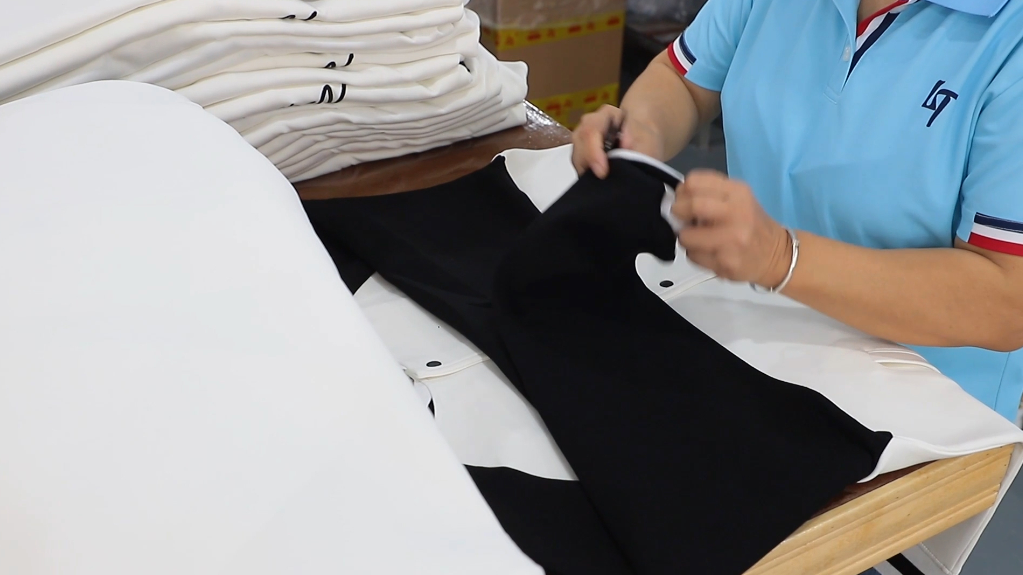
Quality is at the heart of everything we do at Leto Golf Manufacturing. We source only the finest materials, including premium golf fabrics that are not only flexible but also durable, sweat-resistant, and breathable. Our skilled craftsmanship ensures that every garment is made to the highest standards, with attention to detail in every stitch and seam.
Efficiency is another key aspect of our operations. We have invested in state-of-the-art manufacturing equipment and streamlined our production processes to ensure quick turnaround times. Our fast-sampling service allows you to see a prototype of your custom design in a short period, giving you the opportunity to make any necessary adjustments before full-scale production. And we always strive to meet our delivery deadlines, so you can rely on us to get your products to you on time, every time.

In addition to quality and efficiency, we also prioritize service excellence. Our customer service team is always available to answer your questions, provide guidance, and address any concerns you may have. We offer after-sales support, ensuring that you are satisfied with your purchase long after it has been delivered. Whether it's a small issue with a garment or a question about future orders, we're here to make your experience with us as smooth and enjoyable as possible.
Conclusion
Recap of the Importance of Flexibility

In conclusion, flexibility in golf apparel design is not just a nice-to-have feature; it is an absolute necessity. The complex nature of the golf swing, with its multiple body rotations and extensions, demands clothing that can move with the golfer. Restrictive clothing can hinder performance, leading to less - powerful shots, reduced accuracy, and an overall less-enjoyable golfing experience.
The use of flexible fabrics, such as spandex blends, elastic nylon, and lycra, along with advanced fabric technologies, has revolutionized the golf apparel industry. Design features like strategic seam placement, stretch zones, and panels further enhance the flexibility of the garments. This not only provides comfort during the game but also directly impacts a golfer's performance, allowing them to generate more power, maintain better accuracy, and stay balanced throughout their swing.
Encouragement to Choose Leto for Custom Golf Apparel
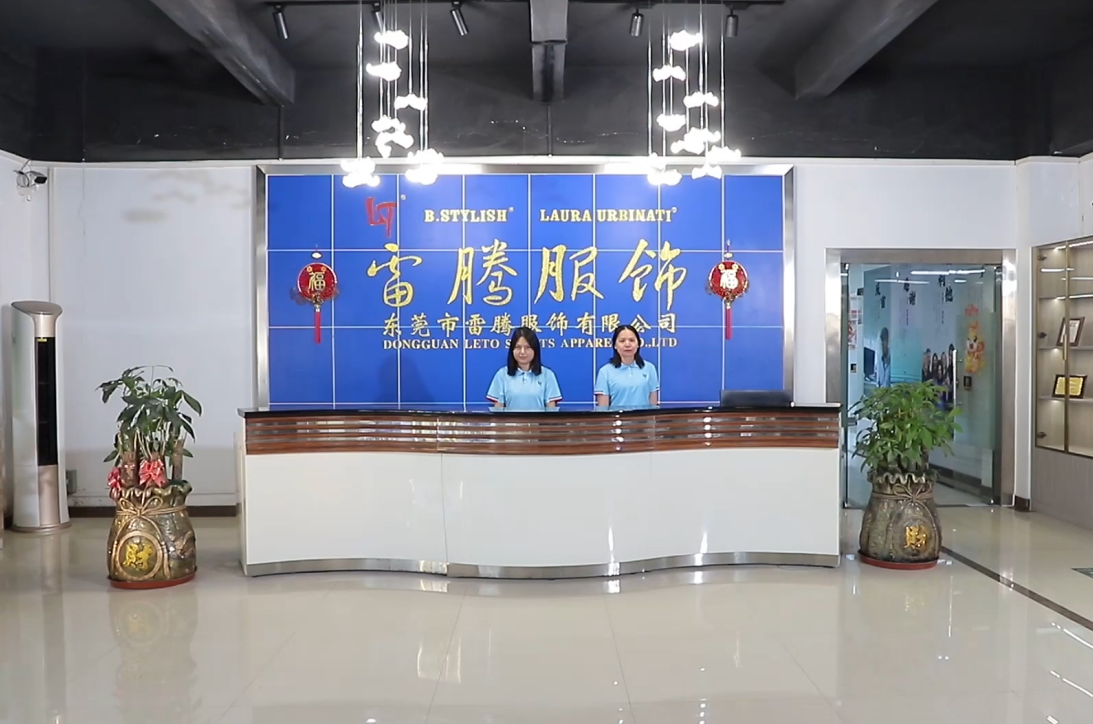
When it comes to finding the perfect golf apparel that combines flexibility, quality, and customization, Leto Golf Manufacturing is your go-to choice. Our comprehensive customization services, from custom golf polo shirts with no minimum orders to personalized golf wear, cater to the diverse needs of golf apparel startups, individuals, procurement managers, and fashion buyers. We use premium golf fabrics, employ skilled craftsmanship, and offer trendy and innovative designs. Whether you're looking for durable golf wear, eco - friendly options, or luxury-style ladies' golf apparel, we have you covered. Don't compromise on the quality and flexibility of your golf apparel. Choose Leto Golf Manufacturing and experience the difference in your next golf game.
Post time: 25-02-25








